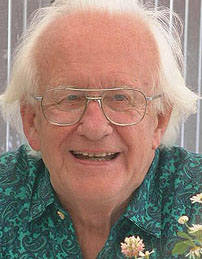|
A mini theory
of peace

By
Johan
Galtung
January 4, 2007
The basic point is that peace is a relation,
between two or more parties. The parties may be inside a person, a state
or nation, a region or civilization, pulling in different directions.
Peace is not a property of one party alone, but a property of the relation
between parties. Saying that in no sense belittles the significance of
the party's intent and capability to build peaceful relations. But, like
a marriage, it is not the sum of the capabilities of the parties. Which
is why we can have lovely people related in a less-than-lovelymarriage.
And vice versa.
What kind of relations can we have? Three types, it seems:
NEGATIVE, DISHARMONIOUS: what is bad for one is good for the Other.
INDIFFERENT: a non-relation, they do not care about the Other.
POSITIVE, HARMONIOUS: what is bad-good for one is bad-good for Other.
In the real world relations may be mixes of all three. When the negative
relation is brought about with intent, the party is an actor, we talk
about direct violence, or harm, and about war if the actor is collective.
If the violence to a party is not intended (but watch out for acts of
commission, more or less intended!) it maybe referred to as indirect,
often caused by inequitable structures producing harm - structural violence.
And then the role of culture legitimizing either or both types of
violence: cultural violence.
From this follow two concepts of peace:
NEGATIVE PEACE: the absence of violence, like a cease-fire, like keeping
them apart, not negative but indifferent relations.
POSITIVE PEACE: the presence of harmony, intended or not. They are as
different as negative health, the absence of (symptoms of) illness and
positive health, the feeling of wellness and the capacity to handle some
illness.
From this, then, follow three types of peace studies:
NEGATIVE PEACE STUDIES: how to reduce-eliminate negative relations.
POSITIVE PEACE STUDIES: how to build ever more harmonious relations.
VIOLENCE-WAR-ARMS STUDIES: the intent and capability to inflict harm
The third, very frequently found, may be useful, but only when coupled
with studies of the intent and capability to build harmony. One approach
to negative peace studies opens for PEACE AND CONFLICT STUDIES, seeing
violence-war as the smoke signals from the underlying fire of a conflict.
And that leads to a major approach to negative peace: remove the conflict,
by solving it or, more modestly, by transforming it so that the parties
can handle it in a nonviolent way, with empathy for each other, and with
creativity.
The root of a conflict is always a contradiction, an incompatibility or
clash of goals which then easily translates into a class of parties and
violent behavior. At any stage in this process negative attitudes may
enter - and attitudes, behavior and contradictions then feed into each
other in vicious cycles. In the wake of those processes are traumatized
parties and actors with festering wounds on body, mind and spirit.
That leads us to the two key tasks in search of, as a minimum, negative
peace:
MEDIATION to resolve the incompatibility,
and
CONCILIATION, healing the traumas, removing them from the relation between
the parties, and closure. If some closure is brought about without conflict
resolution we should not talk about conciliation but pacification - a
non-starter.
A useful metaphor is to turn the page in
the history of their relations, opening a blank page. If that page remains
blank, nothing positive, nothing negative, only indifference has been
obtained. Arguably better than hatred and harm, but a non-relation may
easily remain one.
To inscribe that page with ideas of positive peace and put them into practice
gives us the other side of the peace coin: positive peace, harmony. In
a marriage the harmony of body, mind and spirit.
An indicative term is COOPERATION, another a JOINT PROJECT, beyond cognitive
ideas supported by positive emotions. A project is something spiritual,
imbuing the parties with meaning; something to live for, together. For
the content the sky is the limit. So, exactly what do we mean by cooperation,
by a joint project?
Peace studies would answer in terms of the properties of that relation,
and in two words: STRUCTURAL PEACE. And that means, for a starter, EQUITY,
as opposed to exploitation. They all get a high net value, as seen by
them, out of it, those values being if not exactly equal at least not
too unequal. In this process there is RECIPROCITY, as opposed to the mental
conditioning of one by the other. There is INTEGRATION in the sense of
all relating to all, as opposed to fragmentation. There is HOLISM, the
use of many faculties in all of them, as opposed to segmentation. And
there is INCLUSION of them all, as opposed to exclusion, marginalization.
A hard bill to meet? Not at all. This is what friendship, close kinship
and neighborship, a good family and a good married couple, good relations
of worship and workship are about. Bring in the components of structural
violence indicated above and we are in deep trouble. At the level of a
multi-national state this is what a community of nations is about. At
the macro-level this would point to a community, even a union, of countries.
And at the mega-level to the mobilization
of both genders, the three generations, the five or so races, all classes,
the, say, 2000 nations and 200 states in a joint project of human dignity
for all. As a bulwark, immune system against violence. As a concrete and
very feasible, utopia. As peace.
Copyright
© TFF & the author 1997 till today. All rights reserved.
Tell a friend about this TFF
article
Send to:
From:
Message and your name
Get
free TFF articles & updates
|